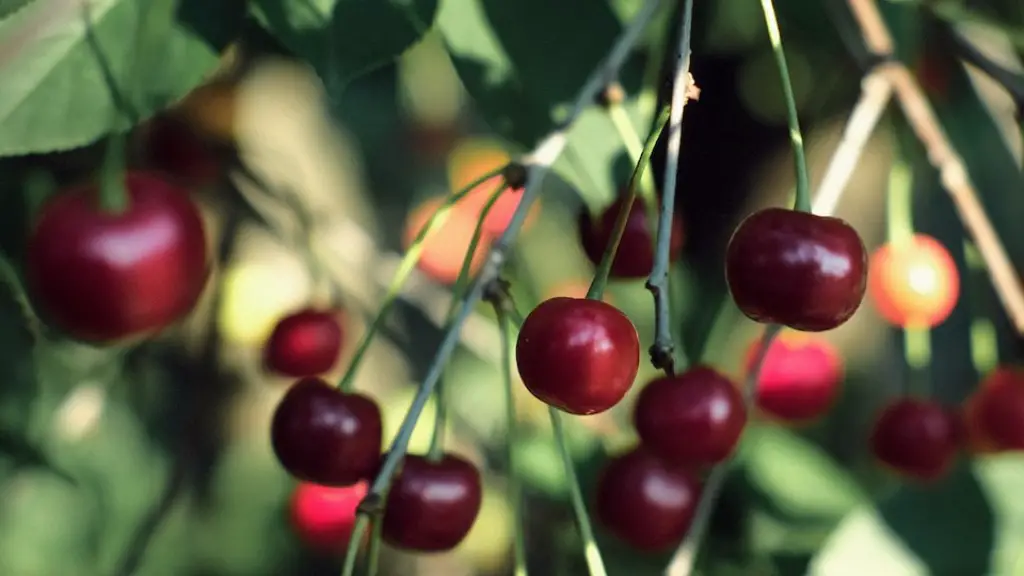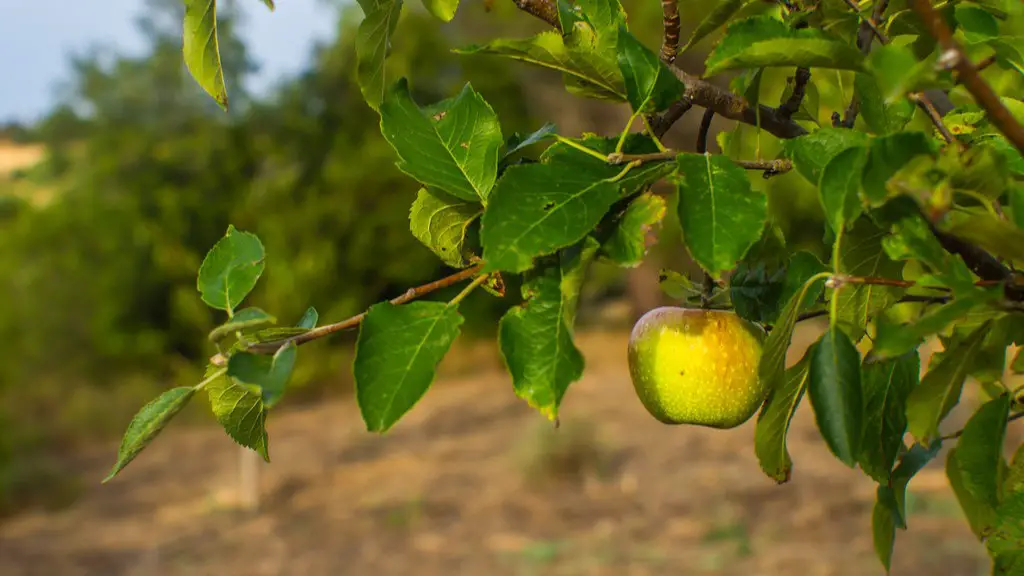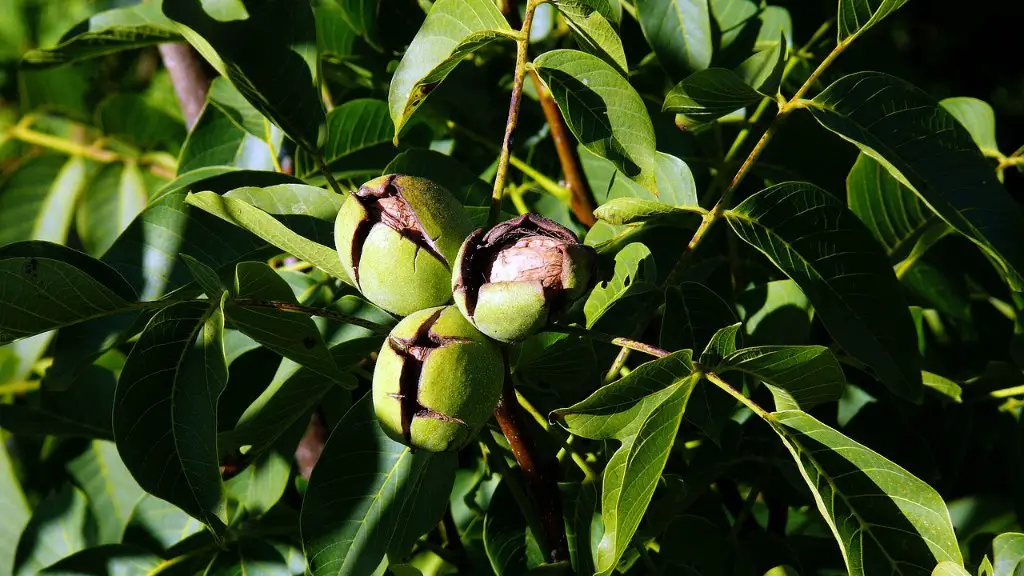Tasting sweet, succulent cherries is a summertime treat, but it’s not so easy to get them off the tree. Harvesters have to contend with tall branches and other physical hurdles before they can savor the delights of a juicy cherry. Harvesting cherries requires careful planning and knowing the correct methodology.
Whether it’s a sweet or sour variety, there are a few important tips for anyone harvesting cherries from tall trees. Firstly, the picker should understand their tree’s canopy structure. Most cherry trees grow in a vase shape, with their branches spreading out at the top wider than their base. Knowing how the branches are splayed out will help the picker reach higher branches and determine proper harvesting tactics.
Secondly, the best time to harvest cherries is when temperatures are between 54 and 77°F (12 and 25°C). Otherwise, the cherries can become too ripe and will be too soft for harvesting. There are also preferred times of the day, with mornings being best to harvest cherries. This is because cherries can become heat stressed quickly during hotter times of the day, which could result in poor quality fruit.
Thirdly, cherries should be gently plucked from the tree using your fingers and thumb. Make sure that you don’t squeeze the cherries with too much pressure, and try to pull them straight off the tree without twisting or rotating. You also need to be sure to harvest only ripe cherries and not ones that have started to over-ripen. Over-ripe cherries will easily drop off the branches, so it’s important to identify these and leave them to be picked up afterward.
Fourthly, to reach branches up high, it is recommended getting a ladder or a step platform. Ladders should be positioned at an angle and safely secured to a stable base, such as stakes holding it in place. When harvesting from a step platform, make sure that it is securely fastened to the tree. Not following these safety tips could result in falls from high heights!
When harvesting is complete, you will have a lot of cherries in containers. Make sure that you don’t overfill the containers, as this causes the cherries to get squashed and bruised. Fill the containers just to the brim, and handle the cherries with care during transport.
Additionally, it is important to clean and sanitize the equipment and containers after harvesting has been completed. This is to prevent any contamination of the cherries with chemicals or bacteria, which could make them inedible. Properly sanitize all surfaces using a cleaning agent and warm water.
Tools for Harvesting Cherries
When harvesting cherries from a tall tree, there are a few essential tools to make the job easier. Quality pruning shears are essential for cutting and trimming cherry tree limbs. Invest in good-quality shears and regularly sharpen them to prevent smudged surfaces from contact with inferior blades.
Choose gloves that won’t snag on the tree branches. Gardening gloves with neoprene palms and nitrile coating are best for harvesting cherries as they are more durable and resistant to cuts and abrasions.
Also, consider using a long-handled fruit picker. This tool is designed with a claw-like device to help harvest cherries without having to climb a ladder or reach with your hands. When using this tool, take care not to damage or break any branches or leaves.
Why are Proper Harvesting Techniques Important?
Knowing how to properly harvest cherries is important for a few reasons. Firstly, improper harvesting technique or timing can lead to a decline in the quality and taste of the fruit. Secondly, incorrect harvesting can damage the branches, which can impede growth and hinder flowering the following year. Thirdly, improper harvesting can lead to overcrowded branches, and might cause the fruit to be malformed.
A well-harvested cherry tree can bear large, heavy and healthy fruits. If the harvesting techniques are not followed properly, the tree will produce fewer cherries and in poorer quality. To ensure quality fruit, use the correct techniques and tools for harvesting from tall cherry trees.
Protecting the Harvest
Once all the cherries have been harvested, it is important to protect the harvest from microbial or insect damage. Start by washing the cherries and remove any leaves, twigs, and other foreign objects. Then, carefully pack the cherries into waxed cardboard boxes, and store them in a cool environment.
Another way to protect the cherries, is to irrigate the cherry tree a few days before harvesting. Irrigating the tree causes the cherries to swell and become juicier. Properly irrigated cherries are safer from pests and infections.
Take extra precautions against birds by hanging bird scarers, making loud noises, or installing other kinds of bird deterrents. You can also net the cherry tree to protect the fruit from birds, without controlling airflow. Just make sure to remove the net as soon as the harvest is complete.
What to do After Harvesting
Once all the cherries are successfully harvested, the picker should inspect the fruit for any signs of decay or contamination. Any bruised, rotten, or diseased cherries need to be discarded. The remaining cherries should then be sorted into different categories in terms of size, color, and shape.
Finally, cherries can either be consumed fresh or engaged in further processing. Froze cherries and canned cherries can both be enjoyed for several months, and even for years if stored correctly in a cool, dark place.
Maintaining Cherry Trees
Harvesting cherries from tall trees is only a part of the equation. To ensure that you continue getting fresh cherry harvests for years to come, you need to properly maintain the trees. Prune branches correctly at the start of each cycle to remove dead or diseased limbs, and fertilize the tree according to the recommended schedule.
It is also important to maintain an adequate system of pest and disease control. Pay close attention to the tree at the end of harvest time, and take action to treat any pests found on the trunk or leaves. You can also use healthy, natural fertilizers that can give the cherry tree the nutrition it needs without any adverse effects.
Further, make sure to use pesticides only when necessary. If the tree is severely infested with pests or diseases, consider using chemical treatments, but use control measures as a last resort.
Harvesting Tips for Success
Harvesting cherries from tall trees can be a difficult undertaking, but with the right techniques and many safety considerations, it can be enjoyable and successful. It is important to choose the proper tools, understand the canopy structure of the tree, ensure that the cherries are harvested at the right time, and practice proper safety methods.
Once you have mastered the basics of harvesting cherries, you’ll be able to collect more cherries and ensure a successful harvest every year. With careful planning, adequate maintenance, and proper harvesting techniques, you’ll reap the rewards of tasty cherries for years to come.




